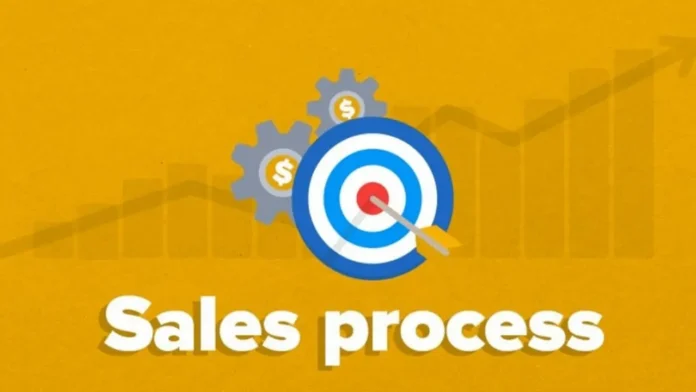Sales Process, often considered the lifeblood of a business, is both a science and an art. The science involves strategies, data analysis, and structured processes, while the art lies in the ability to persuade, connect, and close the deal.
Hence, we are delving into the art of persuasion by mapping out the ideal sales process for your product. Whether you’re selling a tangible item or a service, a well-structured sales process can make all the difference.
Ideal Sales Process Steps:
Step 1: Understanding Your Product and Audience
Before you can persuade anyone to buy, you must thoroughly understand what you’re selling and who your potential customers are. What problem does your product solve? What benefits does it offer? Who are your ideal customers? What are their needs and pain points? The more you know, the better equipped you are to create a compelling pitch.
Step 2: Building Initial Awareness
The first step in any sales process is creating awareness. This can be achieved through marketing and advertising efforts. Use a variety of channels such as social media, content marketing, email, and paid advertising to let your target audience know about your product’s existence.
Step 3: The Hook – Capturing Attention
Once you have your audience’s attention, it’s time to engage them with a compelling hook. This could be an attention-grabbing headline, a thought-provoking question, or a relatable story that highlights the problem your product can solve. The goal here is to pique their interest and make them want to know more.

Step 4: Education and Information
In this phase, you provide your potential customers with detailed information about your product. This is where you highlight its features, benefits, and unique selling points. The key is to educate without overwhelming. Break down complex information into digestible chunks and demonstrate how your product can address their specific needs.
Step 5: Addressing Objections and Concerns
It’s common for customers to have objections or concerns. Address these with transparency and empathy. Be prepared to answer questions, provide additional information, and offer solutions to their reservations. A well-prepared sales team should be equipped to handle objections effectively.
Step 6: Demonstration and Trial
Whenever possible, allow customers to experience your product firsthand. Whether it’s a trial version, a live demonstration, or a sample, giving them a taste of what you offer can significantly boost their confidence in making a purchase.
Step 7: The Persuasion Phase
This is the heart of the sales process, where persuasion takes center stage. Use compelling storytelling and persuasive techniques to showcase how your product can positively impact the customer’s life or business. Paint a vivid picture of the benefits and results they can expect.
Step 8: The Close
The “close” is the pivotal moment when the customer makes the decision to purchase. This can be done through a call to action, such as “Buy now” or “Sign up.” Ensure that the process is simple, smooth, and user-friendly, reducing any friction that might deter a purchase.
Step 9: Post-Purchase Engagement
The sales process doesn’t end with a sale; it continues with post-purchase engagement. Send a thank-you message, offer support, and gather feedback. A happy customer can become a loyal one and may even refer others to your product.
Step 10: Continuous Improvement
An effective sales process is not static. Continuously analyze your sales data, gather customer feedback, and refine your process. Adapt to changing market dynamics and evolving customer needs to maintain your competitive edge.
The Art of Building Relationships
Throughout the sales process, remember that successful sales are not just about closing a deal; they are about building relationships. When you genuinely care about your customers, understand their needs, and provide value, you’re not just selling a product; you’re creating satisfied, long-term clients who trust your brand.
Check some exciting news: Market Munchies: Satisfying Your Appetite for Leads in the Food Business
The art of persuasion in the sales process is about understanding, engaging, and ultimately satisfying your customers. By mapping out a structured sales process that includes these key steps, you can increase your chances of successfully closing deals and building lasting customer relationships. As you refine and adapt your approach, you’ll find that the art of sales becomes a harmonious blend of science and personal connection, and a source of enduring business success.


